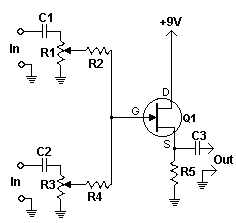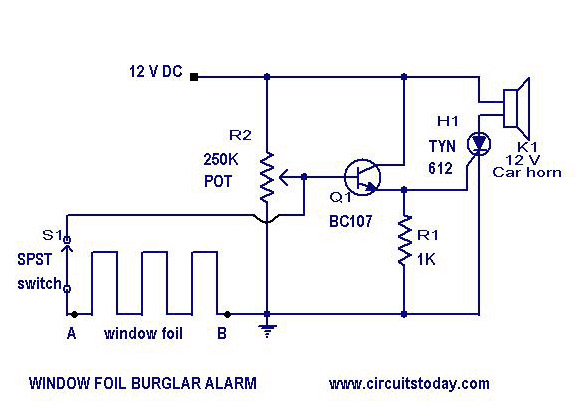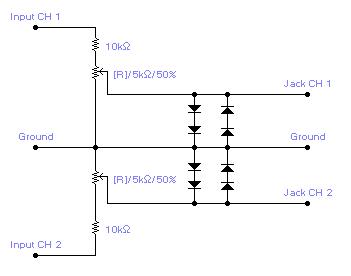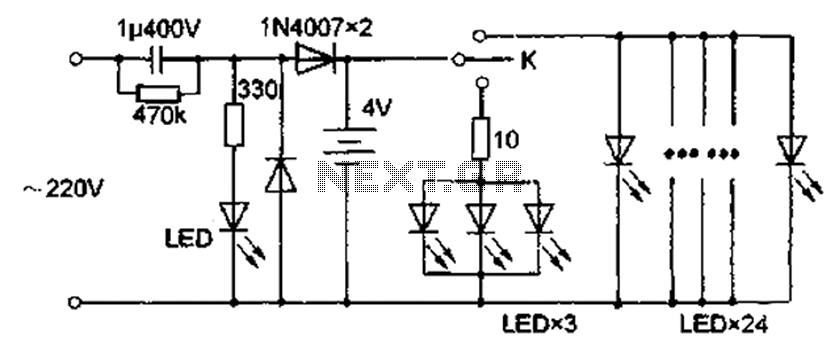
FET Audio Mixer circuit

The mixer can accommodate any number of channels as needed by duplicating the input sections illustrated in the schematic. One instance of this mixer featured 25 inputs.
The mixer circuit is designed to provide flexibility in channel configuration, allowing for an arbitrary number of input channels to be integrated into the system. Each input section typically consists of a preamplifier stage, followed by a mixing stage, where audio signals are combined. The schematic outlines the layout of these input sections, which can be replicated in a modular fashion.
In a typical implementation, each input section may include components such as resistors, capacitors, and operational amplifiers (op-amps) to ensure proper signal conditioning and mixing. The preamplifier stage is crucial for amplifying weak audio signals to a suitable level before they are mixed. The mixing stage may utilize summing amplifiers to combine multiple signals while maintaining signal integrity and minimizing distortion.
The design allows for scalability; when additional channels are required, the user can simply replicate the existing input section circuitry, ensuring uniformity in performance across all channels. This modularity is particularly beneficial in large-scale audio applications, such as live sound reinforcement or studio recording, where multiple sources need to be managed simultaneously.
For practical implementation, attention must be paid to power supply requirements, grounding techniques, and signal routing to prevent interference and maintain audio quality. Proper layout techniques in the PCB design can further enhance performance by minimizing crosstalk between channels and ensuring stable operation across the mixer.As many or as few channels as are required can be added to the mixer. Do this by just duplicating the input "sections" which are clearly shown on the schematic. One version of this mixer I saw had 25 inputs! 🔗 External reference
The mixer circuit is designed to provide flexibility in channel configuration, allowing for an arbitrary number of input channels to be integrated into the system. Each input section typically consists of a preamplifier stage, followed by a mixing stage, where audio signals are combined. The schematic outlines the layout of these input sections, which can be replicated in a modular fashion.
In a typical implementation, each input section may include components such as resistors, capacitors, and operational amplifiers (op-amps) to ensure proper signal conditioning and mixing. The preamplifier stage is crucial for amplifying weak audio signals to a suitable level before they are mixed. The mixing stage may utilize summing amplifiers to combine multiple signals while maintaining signal integrity and minimizing distortion.
The design allows for scalability; when additional channels are required, the user can simply replicate the existing input section circuitry, ensuring uniformity in performance across all channels. This modularity is particularly beneficial in large-scale audio applications, such as live sound reinforcement or studio recording, where multiple sources need to be managed simultaneously.
For practical implementation, attention must be paid to power supply requirements, grounding techniques, and signal routing to prevent interference and maintain audio quality. Proper layout techniques in the PCB design can further enhance performance by minimizing crosstalk between channels and ensuring stable operation across the mixer.As many or as few channels as are required can be added to the mixer. Do this by just duplicating the input "sections" which are clearly shown on the schematic. One version of this mixer I saw had 25 inputs! 🔗 External reference





